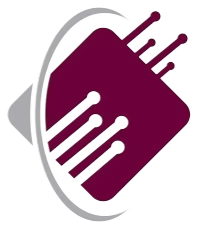
From Software Design to Hardware: Navigating the PCB Journey
In the realm of Electronics, the transformation from Software Design to physical Hardware is a
fascinating voyage that encapsulates the essence of modern engineering. This journey,
particularly in the context of Printed Circuit Board (PCB) Design, is a meticulous blend of
creativity and technical precision. Let’s embark on an exploratory narrative that delves into the
PCB Design and Manufacturing process, illuminating the path from Circuit Design to PCB
Assembly.
The Blueprint of Innovation: Schematic and Circuit Design
The inception of any PCB begins with Schematic Design. Here, engineers employ tools like
Altium Designer to translate abstract ideas into concrete Circuit Designs. Analog and digital
components, from resistors and capacitors to complex Integrated Circuits (ICs), are meticulously
chosen and arranged to ensure optimal voltage and current flow through the copper traces of the
future PCB.
Crafting the Core: PCB Layout and Design
Transitioning from schematics to PCB Layout, designers face the challenge of placing SMD
Packages, vias, and other components onto the FR4 substrate. The layout process is a critical step
where analog and digital signals are carefully routed to minimize interference, and PCB
Thickness, Solder Mask, and Silk Screen layers are defined to protect and annotate the board.
From Design to Reality: PCB Manufacturing
Once the PCB Layout is complete, the design is exported into Gerber files, which serve as a
blueprint for PCB Manufacturing. Factories like JLCPCB and PCBWAY utilize CNC Machines
to etch the design onto Layers of FR-4, drill vias, and apply HASL or ENIG Gold Plating for
reliable soldering points. The Stencil is then prepared for applying solder paste to the board,
especially for BGA and QFN packages.
The Assembly Line: Bringing Components Together
The final stage, PCB Assembly, is where the board comes to life. Pick and Place machines
rapidly position Components onto the PCB. Through Hole and SMD technologies are employed
to secure the components, and the Bill of Materials (BOM) ensures that every piece is accounted
for. The assembly process culminates with reflow soldering, testing, and inspection, ensuring that
each PCB is ready to power the next generation of electronic devices.
Conclusion: The Circuit Completed
From PCB Design to PCB Assembly, the journey is a testament to the marvels of electrical
engineering. It’s a process that demands precision, expertise, and a keen eye for detail, resulting
in the creation of PCBs that are the heartbeat of the electronic world.

